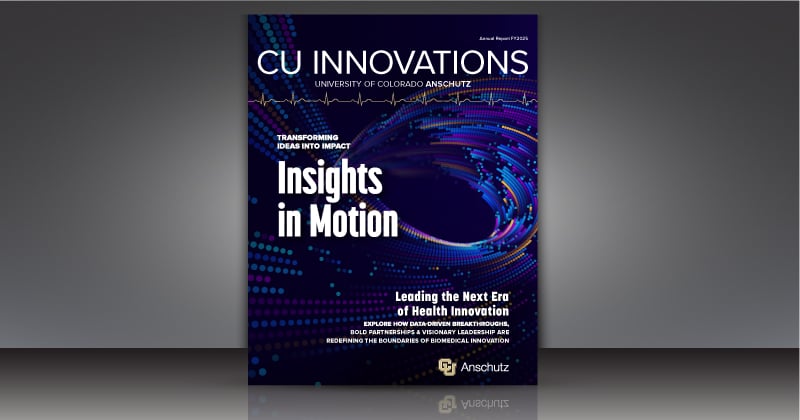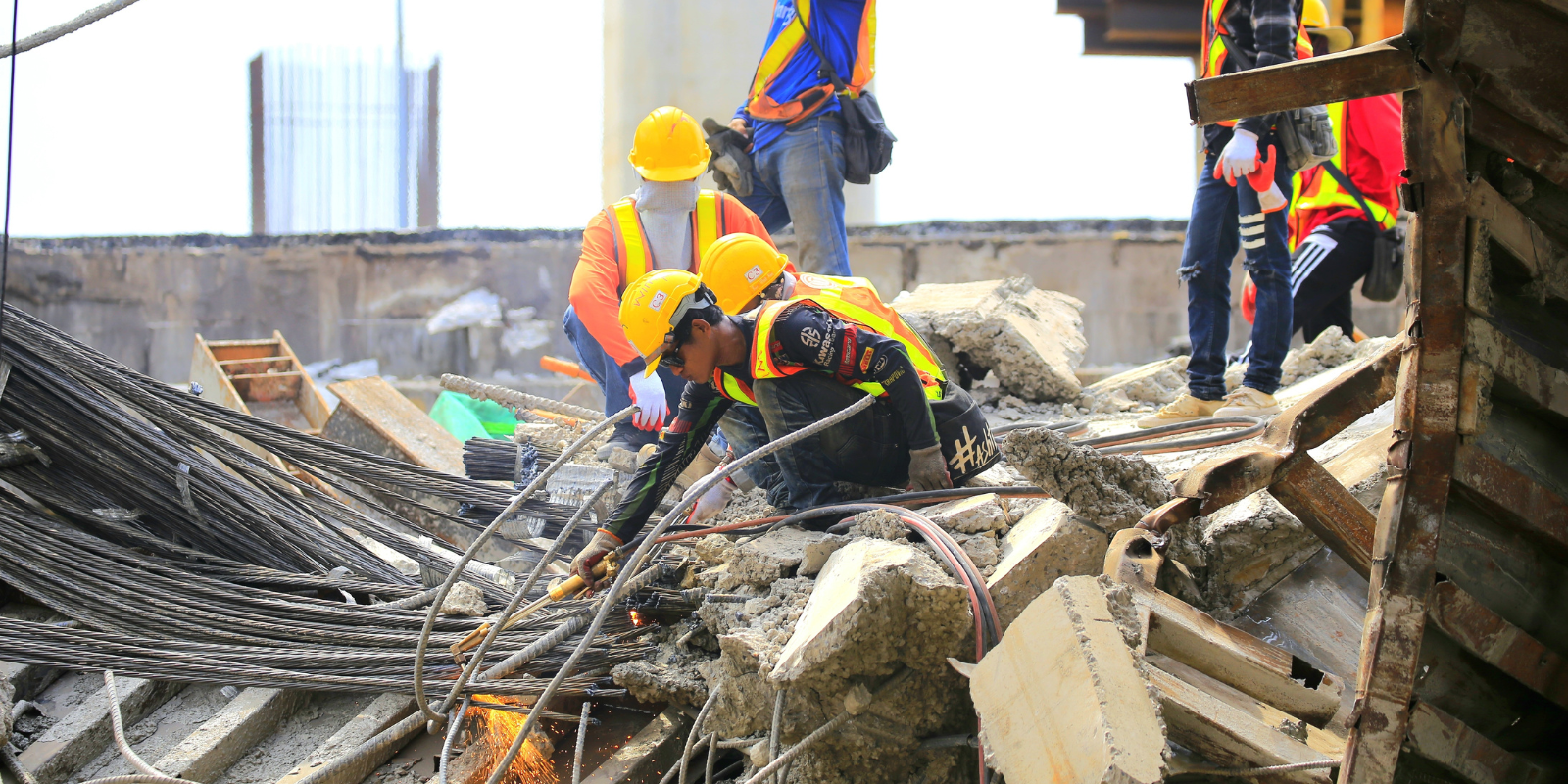Can you talk a little about your background?
I am a researcher and, most importantly, a practitioner. For the last 10-plus years I've been running public health practice projects, primarily working with businesses and workplaces to foster healthy work environments. Prior to the pandemic, I focused on the best ways to support the well-being of employees across all industries.
Over the last two years, I’ve shifted to helping employers, managers and individuals cope with the major changes to how we work. There's been obvious attention to, and an opportunity for worker health experts to look at, the paradigm between managing work and non-work stressors.
Two years ago, we had to abruptly adjust to working from home full time. Now, some of us are back in the office at least a few days a week. Why does it feel like such an adjustment, both mentally and physically, switching back into office work?
The first thing to remember is that initial feeling we all had when we were first sent home to work. It's the same type of adjustment. As a social species, we go through brain neurological changes when we go from a social setting where we are connecting with people and operating in a very connected way, to a different operations mode where we are isolated, yet still connecting in a very different way.
When we return to the office, what the majority of us feel – but not everybody, depending on the type of person – could be a sense of fear or anxiety. And often it's a sense of overwhelm because we've been having conversations mostly virtually. You don't go to the water cooler anymore. You have these conversations in a box.
Returning to the office can be overwhelming for people who have made that adjustment neurologically. For others, it's the best thing because they've been uncomfortable with that isolation. Being able to get back to the routine of connecting and returning to in-person meetings and in-person events has actually been a way to reduce their anxiety, because they’ve lived with that gap and that grief in the last two years. It depends on the person, but it's an adjustment period that we're all dealing with right now.
When you work from home and have meetings over Zoom, sometimes you can multitask. Having in-person meetings definitely makes it harder to answer an email while attending a meeting. Is there a way to train your mind to go back to focusing on one task at a time?
Yes. And I think it's a really great question, because employers have been wondering how productive or engaged remote workers are.
There are a lot of tradeoffs. When you work from home, you have the ability to multitask, accomplishing work and non-work tasks at once. You can answer emails and unload the dishwasher all while being on a Zoom call. Some people can multitask better than others, but one of the things that has been lost in the virtual meeting setting is the focus that comes from being in a room without distractions.
What I’ve found personally is that when I'm in in-person meetings or even on a phone call, the ability to engage is much stronger.
What we're recommending for employers and also for individuals is that they work on their schedule to balance work needs of all types. It helps to designate specific times for meetings, for emails, for deep work and for breaks to recharge and re-motivate. One of the opportunities in return to office and return to in person is finding ways to prevent burnout and build motivation. And on the day to day, people need to still be able to structure times and places to rest, recuperate and recharge. That's one of the important things that employers should really be supporting right now.
Does an ideal hybrid schedule – such as two days at home, three days in the office – exist?
Absolutely. So we had to ask this question even before COVID, when we had workplaces that were wanting to or needing to make accommodations for more flexible work arrangements. And then COVID forced this for most office workers that were sent home and turned into remote or teleworkers without the option or the chance to think about how it would work best in different situations. Now that we've recognized the benefits of flexwork, there is a demand for hybrid schedules. There is also an opportunity for employers to acknowledge that there are important times to come together and for employers to give employees or workers flexibility to structure their work schedules and get the work done when it's best for them. So the answer is yes, but it still depends on the nature of the job and the individual person.
What we've seen through COVID is that there are work situations that can't operate remotely and that really do need employees present in office. This raises issues around fairness and equity. When developing an ideal hybrid schedule, it’s important to ask questions, having managers and supervisors, first and foremost, ask employees what their preferences are, what their needs are, what that ideal situation looks like to get the work done and still foster the work culture the organization is built on… always being open to what workers feel is comfortable. Because it looks different for everybody.
Much has been made of general stress and workplace stress during the pandemic. What are things managers should be aware of in terms of trying to reduce stress for workers?
The biggest thing that we've learned from the pandemic is that leaders need to practice empathy. Managers and leaders at every level have tuned in to the emotional element, and expressed vulnerability with their employees about what they're experiencing. It's really opened up the conversation in a lot of ways about those non-work factors that are contributing to life: being able to go on a walk in the morning because you're not commuting or being able to pick up your kids from school and adjust your work schedule accordingly. These are some benefits, the silver linings, that have come with COVID, and have encouraged managers to communicate more openly about these factors with employees.
Studies done in the last two years show that business leaders who demonstrate empathy help drive a successful return to work through engagement and a sense of belonging. Being able to empower individuals and trust them has actually resulted in a greater rate of employees returning to the office. The other important thing is communication. This is a time for leaders and managers to be very clear about expectations and plans. If you're going to tell people that they have flexibility, but you also want to see them in the office two to three days a week, then employees need you to make that clear.
Individuals are still experiencing times of uncertainty, so we need to be adaptive moving forward. We don't know what's going to happen next. The ability to pivot and be flexible as managers and employers is something that's essential in moving forward for most workplaces.
Have you seen increased interest in Health Links™ services during the pandemic? If so, what does this signify? How have businesses’ needs in the areas of employee health and safety changed over the past two years?
Great question. We have seen consistent engagement with a shift in the type of topics we are assisting organizations with. A priority of Health Links is to provide technical assistance to the businesses that we work with. So, we as a program pivoted immediately, knowing that when the shutdowns happened, people didn't want to be talking about wellness programs.
These organizations were in crisis mode and needed to implement public health guidance quickly to protect workers and accommodate people who were working from home. We started providing virtual advising to translate public health guidance for COVID response. That lasted about the first year and a half. And through that, we saw this opportunity. We saw businesses realize that worker health and safety had been on their list of priorities, but it'd been near the bottom. It'd been number 10, and now it's number one. One, because it has to be, and two, because it is essential to operating.
And now what we've seen in the last six months with the ‘great resignation’ or ‘great reshuffle,’ is that through the businesses Health Links works with, worker health and safety has become a top priority and is part of their business plan. This is how they operate on a daily basis. It comes as no surprise that one of the things employers are now really concerned about is mental health.
Burnout, mental health and stress are front and center – not just in healthcare and some of the essential services, but in every industry. Behavioral health issues like anxiety and depression – and how that's resulted in prescription drug or substance use – have had a huge impact on individuals. Employers are also focused on general well-being, emphasizing chronic disease prevention, getting people access to basic services, and understanding that many haven't gone to the doctor in the last two years. Going back to the fundamental roots of public health practice in the workplace has been a huge opportunity for us at Health Links.
Burnout has been a hot topic lately. Do you think burnout has always been there, but the pandemic exacerbated our sense of it? Or has burnout increased because we're all working from home, working all the time, and feeling the need to always be on?
Both. When we're talking about healthcare workers, that's a very specific kind of burnout. But when we're talking about burnout and even the emotion of lamenting, or questioning our purpose or our work, a lot of that has come from the exhaustion and fear that comes with uncertainty due to the pandemic. It’s forced us as humans to question: What's the value in my job? What's the value in my life? We've now spent two years with so much uncertainty about and reflection on what we do for work. Let's just take, for example, teachers who've been put under huge stressors and questioned their vocation.
There's also been a result of burnout because of the limited source of mental energy that we have. In year one of the pandemic, we conducted a survey, and found that the majority of respondents said working more was one of the ways in which they were coping with stress.
There was this backlash of having people working remote, working more, and juggling higher stressors at home that depleted their mental energy. And they weren't doing much outside of work to refuel. Many aspects of life and work intertwined and levels of stress were high. That inevitably has resulted in the state of burnout that we're seeing today.
Lastly, I want to mention the change we're seeing with employers not only providing paid time off, but encouraging access and use of these benefits. Typically – and I'm speaking to faculty and staff in higher education – you came to work even when you were sick – it’s just what you did. There's been a transition from COVID protocols to now: our workplace health and safety policies are to ensure that workers can come to work and feel comfortable with the health and safety of their work environment.
Part of that is knowing that taking a sick day is ok. We’re supported to take a mental health day. We’re supported to take vacation time to recharge because we've earned it. Managers and supervisors should be encouraging and supporting the use of paid time off, and they too should be finding ways to recharge. It’s the perfect time to role model good work behaviors.





